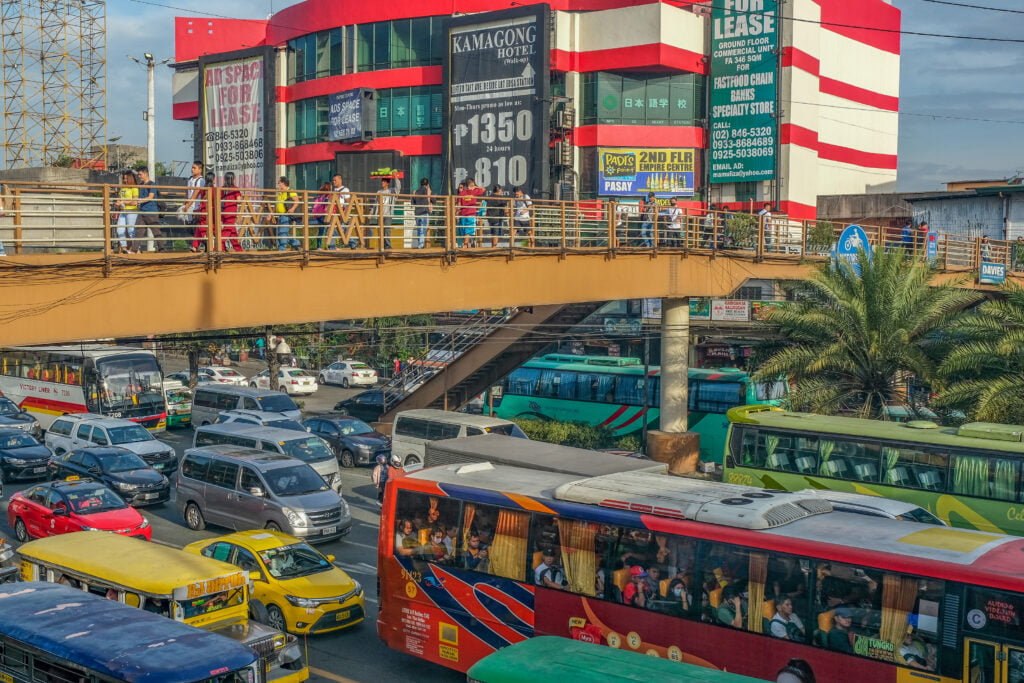Maximize Exposure with Transit Advertising Philippines
Maximize Exposure with Transit Advertising Philippines
Blog Article
How Transit Marketing Can Transform Public Transport Spaces Into Dynamic Marketing Operatings Systems
Transit advertising holds substantial potential to redefine public transport rooms right into dynamic marketing platforms that involve and notify. As we discover the complex advantages and advancing approaches of transportation marketing, it increases the question of how this transformation can redefine our communications with both brand names and the urban environment.
Advantages of Transportation Marketing

In addition, transit marketing is highly cost-efficient compared to typical media. It enables marketers to achieve high perceptions at lower prices, optimizing return on investment. The restricted target market of commuters supplies an opportunity for brands to share their messages to individuals who are commonly receptive during their traveling times.
In addition, the dynamic nature of transportation advertising and marketing allows campaigns to be upgraded regularly, guaranteeing that messaging stays relevant and timely. This flexibility can be essential in reacting to market fads or promotional events, keeping the brand top-of-mind for consumers. Last but not least, the prevalent presence of transit advertising adds to brand name recall; duplicated direct exposure within acquainted traveling contexts reinforces brand awareness and promotes consumer loyalty, eventually boosting and driving sales brand name reputation.
Sorts Of Transit Advertising
Public transport systems supply numerous layouts for advertising and marketing, each providing to various advertising and marketing strategies and audience engagement methods. One popular kind is outside bus and train covers, which cover the whole automobile and develop a mobile signboard result, permitting for high visibility in urban atmospheres. These wraps can catch focus as they go across busy streets, reaching a diverse target market.
One more preferred layout is indoor advertising, which includes posters, electronic displays, and ads on transportation seats. These positionings engage passengers throughout their journey, enhancing brand name messaging in a confined room. Digital shows, particularly, supply the benefit of dynamic web content, allowing marketers to update messages in real-time.
Terminal marketing is also substantial, featuring posters, banners, and interactive stands within transit terminals. These ads take advantage of foot traffic and can target certain demographics based on place.
Lastly, advertising partnerships with transportation authorities can lead to special campaigns, such as themed transit experiences or occasions, enhancing the general engagement with commuters. Each kind of transportation marketing supplies distinct advantages, permitting brands to customize their strategy to successfully reach their target market within the public transport ecosystem.
Engaging Travelers Effectively
Commuters are progressively flooded with advertising messages during their day-to-day trips, making it vital for brand names to involve them in innovative methods. To record focus in this crowded area, advertisers need to focus on creative thinking and relevance. Using appealing visuals and concise messaging can substantially boost the chance of engagement.
Interactive elements, such as QR codes or augmented reality functions, can likewise transform static ads right into immersive experiences, promoting a much deeper link with the target market. Brands must concentrate on attending to travelers' passions and demands, customizing messages to reverberate with their way of life, whether with promotions for regional companies or services developed to enhance their commuting experience.
Moreover, timing plays an essential role; strategically placing advertisements throughout height commuting hours can make the most of visibility and impact. Involving travelers successfully likewise involves leveraging social media integration, permitting guests to share their experiences or promos directly from transit systems, consequently enhancing brand reach.
Essentially, efficient interaction hinges on understanding the traveler trip and producing compelling, interactive, and relevant advertising and marketing experiences that not just catch attention yet likewise drive action and commitment. By doing so, brands can transform public transport right into a dynamic advertising platform that resonates with its audience.

Measuring Advertising And Marketing Influence
How can brand names precisely evaluate the performance of their marketing projects en route settings? Determining the influence of transit advertising and marketing needs a complex method that incorporates qualitative and measurable metrics. One prevalent technique is tracking involvement through mobile analytics, where brand names can analyze foot web traffic patterns and application interactions previously, throughout, straight from the source and after campaigns.
Studies can give important understandings right into brand recall and customer view, allowing brands to determine how well their messages reverberate with travelers. Additionally, keeping an eye on social media sites engagement pertaining to details campaigns can reveal shifts in public assumption and brand name conversation.

Additionally, working together with transit companies can improve dimension precision, as they usually have detailed demographic data on ridership trends. By integrating these approaches, brands can develop an extensive understanding of their marketing efficiency, guaranteeing that their campaigns not only get to yet additionally influence their target market properly.
Future Fads in Transportation Marketing
A considerable shift is anticipated en route advertising as technical advancements and changing customer habits reshape the landscape. Transit Advertising Philippines. The integration of interactive media and digital display screens is anticipated to enhance engagement, permitting brands to deliver vibrant material that resonates with varied audiences. As mass transit systems accept smart modern technology, marketers will utilize real-time data analytics to customize messages based upon guest demographics and habits
Moreover, boosted truth (AR) is positioned to reinvent the way travelers communicate with promotions. By offering immersive experiences, AR can change a mundane trip into an interesting narrative that records interest and cultivates brand commitment. This development will likely urge advertisers to develop more experiential projects that drive customer interaction.
Sustainability is an additional vital fad influencing transportation marketing. As ecological consciousness grows, brand names will increasingly look for to straighten with environment-friendly techniques, utilizing lasting products and promoting eco-friendly campaigns click this link within their campaigns.
Final Thought
In verdict, transportation marketing supplies substantial benefits by boosting brand name exposure and engaging a captive audience. As fads advance, the possibility for cutting-edge communications between travelers and brand names is positioned to grow, guaranteeing that transit advertising and marketing continues to be a crucial element of contemporary marketing strategies.
Transportation marketing holds significant potential to redefine public transport areas into vibrant advertising and marketing platforms that notify and engage. The prevalent existence of transit advertising and marketing adds to brand recall; duplicated exposure within acquainted traveling contexts reinforces brand name understanding and fosters customer loyalty, inevitably driving sales and improving brand name track record.
How can brand names accurately analyze the efficiency of their advertising projects in transit atmospheres?In conclusion, transportation advertising supplies significant benefits by enhancing brand name visibility and involving a restricted audience. Transit Advertising Philippines. As fads develop, the possibility for innovative communications in between brands and travelers is positioned to grow, making sure that transit marketing continues to be an important element of modern advertising browse around this web-site approaches
Report this page